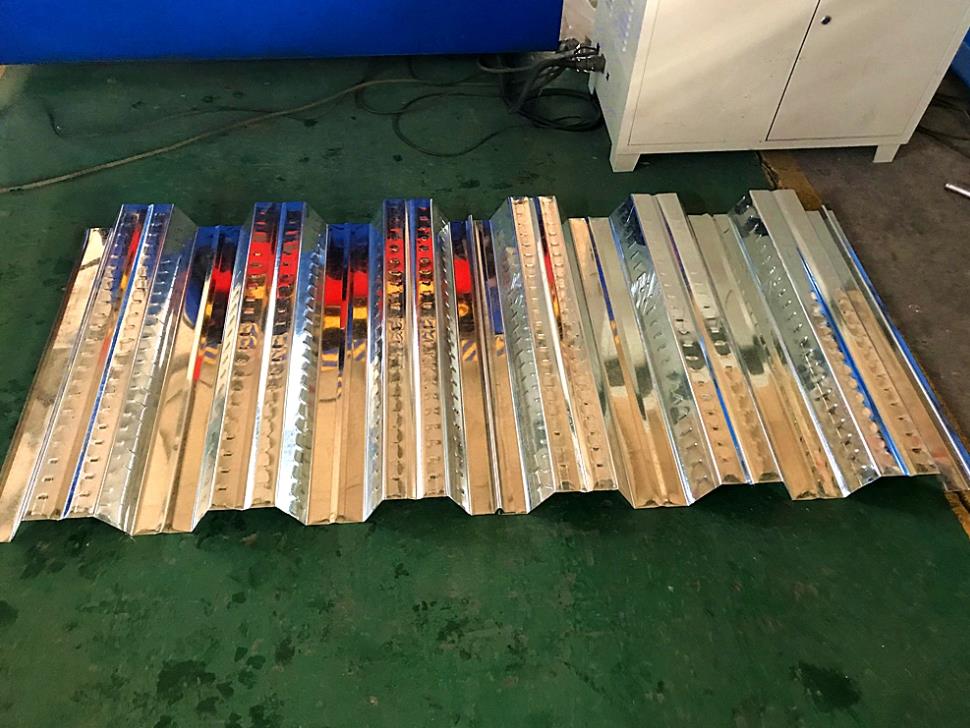standing seam roofing panel roll forming machine
Standing Seam Roofing Panel Roll Forming Machine An Overview
In the construction and building industry, the choice of roofing materials is critical. Among various roofing methods, standing seam roofing has gained significant popularity due to its durability, aesthetic appeal, and effective water management capabilities. A key component in the production of standing seam roofing systems is the standing seam roofing panel roll forming machine. This article explores the features, benefits, and applications of these machines in modern construction.
What is Standing Seam Roofing?
Standing seam roofing consists of panels that are joined by raised seams running vertically along the slope of the roof. These seams are interlocked, offering an effective barrier against water intrusion while allowing for thermal expansion and contraction. The unique design of standing seam roofs facilitates efficient drainage, significantly reducing the potential for leaks and water damage. Moreover, the clean lines and sleek appearance of these roofs make them a preferred choice for contemporary architectural designs.
The Role of Roll Forming Machines
A standing seam roofing panel roll forming machine is designed to produce consistent, high-quality roofing panels from metal coils, typically made from materials such as aluminum, steel, or copper. The process involves feeding a metal coil into the machine, which shapes the metal into the desired profile through a series of rollers. This automated system allows for high production rates and precision, making it an essential tool for manufacturers of roofing components.
Key Features of Standing Seam Roofing Panel Roll Forming Machines
1. Customization Many roll forming machines can be tailored to create specific profiles and sizes, catering to varying architectural designs and customer demands. This flexibility is crucial for roofing contractors aiming to meet diverse project requirements.
2. Efficiency Modern machines operate at high speeds, significantly reducing the time taken to produce roofing panels. This efficiency not only boosts productivity but also minimizes labor costs, leading to more competitive pricing in the market.
standing seam roofing panel roll forming machine

3. Durability Roll forming machines are built with robust materials, ensuring longevity and reliability. Their design facilitates continuous operation, even under demanding conditions, which is essential for businesses looking to elevate their production capabilities.
4. Precision Engineering The high level of accuracy in panel production ensures that the components fit perfectly together, reducing the risk of mistakes during installation. This precision is vital for achieving the airtight seals necessary for effective waterproofing.
5. Reduced Waste With the ability to produce panels exactly to specifications, roll forming machines minimize material wastage, making them an environmentally friendly option in the roofing industry.
Applications of Standing Seam Roofing Panels
Standing seam roofing systems produced by roll forming machines are widely used in various settings. They are ideal for
- Commercial Buildings The durability and low maintenance requirements make them perfect for warehouses, factories, and retail spaces. - Residential Homes Their aesthetic appeal adds value to houses while providing excellent weather protection. - Green Buildings With increasing emphasis on sustainability, standing seam roofs can be integrated with solar panels, cooling systems, and rainwater harvesting systems, contributing to energy-efficient building designs.
Conclusion
The standing seam roofing panel roll forming machine is an indispensable tool in the roofing industry. Its ability to produce high-quality, customized panels efficiently and with precision makes it favored by manufacturers and contractors alike. As the demand for innovative, sustainable roofing solutions continues to rise, these machines are set to play an increasingly important role in the evolution of modern construction. Investing in advanced roll forming technology not only enhances production capabilities but also positions businesses to meet the future challenges of the roofing market. Whether for residential or commercial projects, standing seam roofs crafted with these machines deliver durability, functionality, and aesthetic value, making them a sound choice in today's building landscape.
-
Roof Panel Machines: Buying Guide, Types, and PricingNewsJul.04, 2025
-
Purlin Machines: Types, Features, and Pricing GuideNewsJul.04, 2025
-
Metal Embossing Machines: Types, Applications, and Buying GuideNewsJul.04, 2025
-
Gutter Machines: Features, Types, and Cost BreakdownNewsJul.04, 2025
-
Cut to Length Line: Overview, Equipment, and Buying GuideNewsJul.04, 2025
-
Auto Stacker: Features, Applications, and Cost BreakdownNewsJul.04, 2025
-
Top Drywall Profile Machine Models for SaleNewsJun.05, 2025








